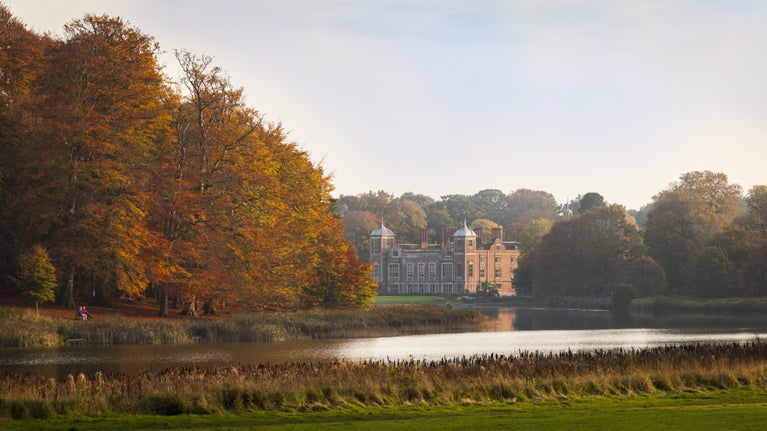
For everyone, for ever
We protect and care for places so people and nature can thrive. Find out who we are and what we stand for.

We carefully manage the gardens and landscapes in our care, to create and maintain diverse natural habitats for wildlife. Find out how we’re helping increase butterfly populations, through habitat management and monitoring, and discover some of the rare species we’re bringing back from the brink.
Habitat loss is the number one reason for the dip in butterfly numbers in Britain, with some species having very specific needs to thrive and breed. Farming and forestry, although essential, have a huge impact on insect habitats, but innovative management systems can help.
Specialised grazing systems use low numbers of native cattle and sheep, which create a mixture of tall and short vegetation. Wild flowers and grasses can flower freely, providing abundant nectar sources for adult butterflies. The holistic grazing scheme at South Park, Croome, has transformed a heavily grazed area to thriving grassland. This means there are good breeding conditions for species such as Essex skipper and marbled white butterflies, whose caterpillars eat grasses.
Clever management of woodlands creates sunny glades and rides, and a mix of young and old trees. These are vital for many of our woodland butterflies. A great example is the wood-pasture restoration at Croft Castle, where dense conifer plantations have been removed. The reintroduction of native trees and grassland have already attracted uncommon species such as silver-washed and dark green fritillaries. We also hope the increase in native flowers will attract the wood white, one of Britain’s most threatened butterflies.

Kedleston is just one example of a property where the parkland is being managed to increase the diversity of flowering plants within the grassland. We've already seen a good improvement in numbers of ringlet, meadow brown, gatekeeper, and small tortoiseshell butterflies. The mature trees are also supporting populations of rarer butterflies like the purple hairstreak and white-letter hairstreak.
We have further plans to help butterflies through habitat restoration projects. Other schemes include working with landowners to connect areas with good butterfly populations, so that they can move through the landscape.
We record butterfly populations, with a fixed width band (typically 5m wide) along the transect each week, from the beginning of April until the end of September. At Hardwick Hall there are monitoring transects in the parkland and the garden. These demonstrate how having a variety of habitats, increase the diversity of butterflies that can be spotted.
We undertake Wider Countryside Butterfly Surveys (WCBS), based on surveys of 1km squares randomly allocated by Butterfly Conservation. We’ve established WCBSs at Attingham, Brilley and Charlecote, with one due to start at Dudmaston this year. These specifically track the butterflies on farmland in our care and compare with trends on other farmland.
In the Dark Peak you might be lucky enough to see rare butterfly species. Upland and moorland habitats provide specialist food and shelter for butterflies with very specific needs to thrive. The steep valley woodlands, rolling grassland and heathland attract hairstreak butterflies. These are found high in the tree canopy, while small heaths flit through the long grass.
The painted lady is a regular favourite in England. The species migrates each spring from the desert fringes of North Africa and gradually moves across Europe with each breeding cycle. In the autumn, many of the last brood will attempt the return migration to North Africa.

Rare butterflies are doing well at the places in our care, thanks to the work of our rangers and tenant farmers. Together, they've helped bring struggling species back from the brink.

We protect and care for places so people and nature can thrive. Find out who we are and what we stand for.
Red squirrels are protected at our places. Discover more about the safe havens we are providing for these fascinating creatures.

Discover more about the winter hibernation habits of the UK’s native butterfly species, where you can find them, and how you can lend a helping hand.

Find out how we're helping to ensure that these endearing animals continue to be a feature of Britain's rivers and lakes for generations to come.

Learn how we protect the bat populations that live at places we look after, as part of our core values as a conservation charity.

Numbers of hazel dormice have declined rapidly over the last century as a result of loss of woodland habitats and competition for food. Learn about our work to protect these endangered mammals.

Learn about the top wildlife-friendly gardens in our care, all the different species thriving there and how we're putting nature at the heart of our work.
